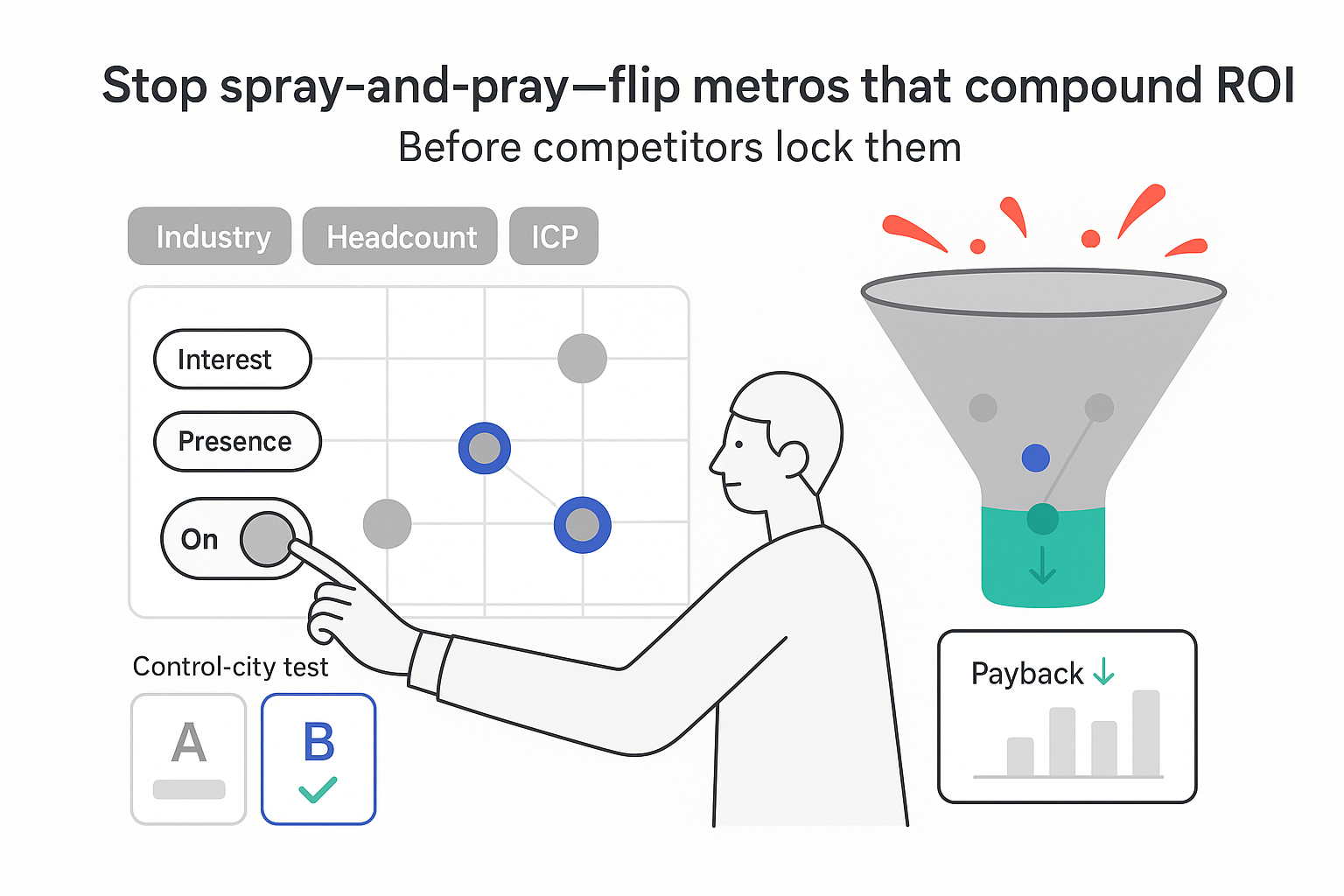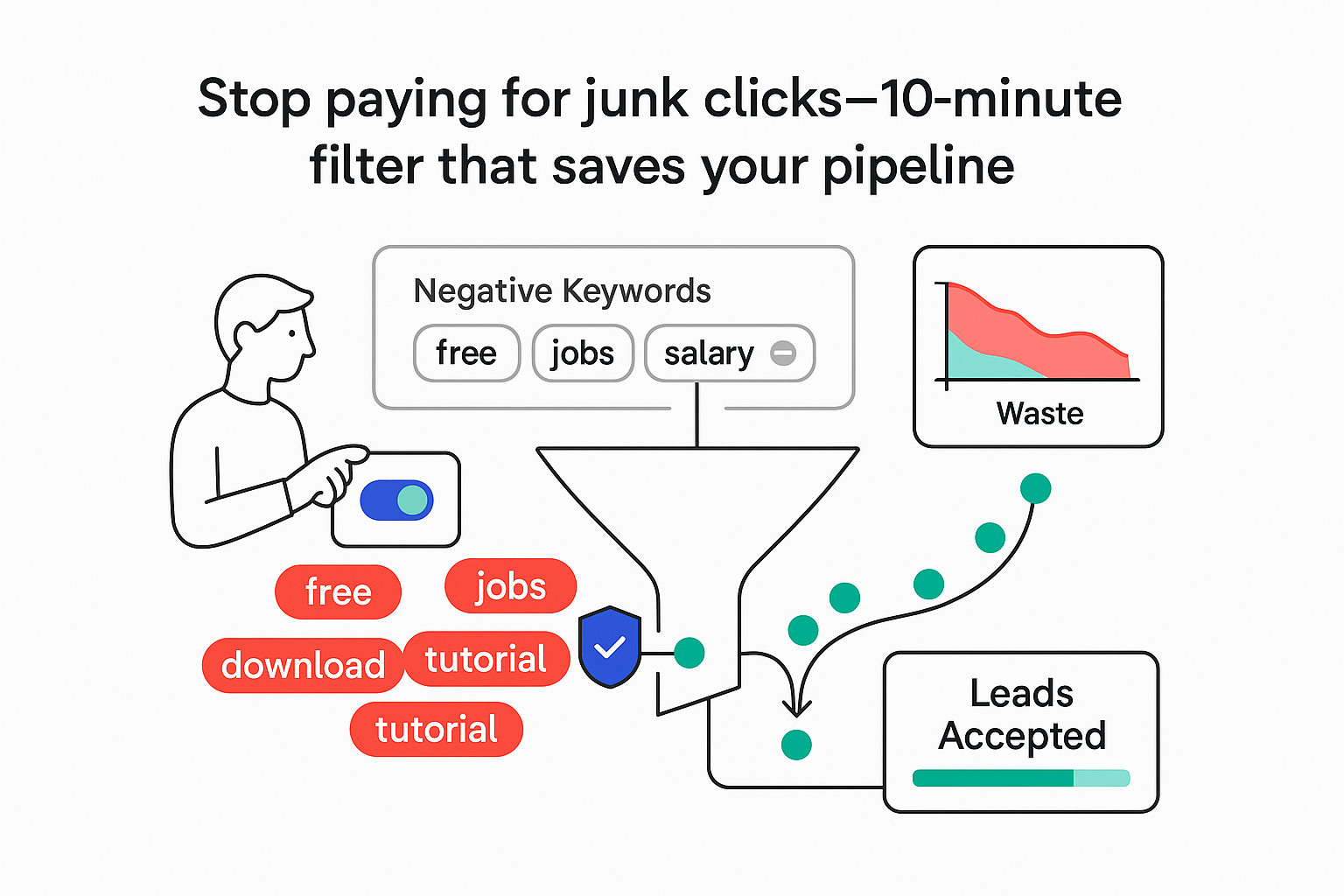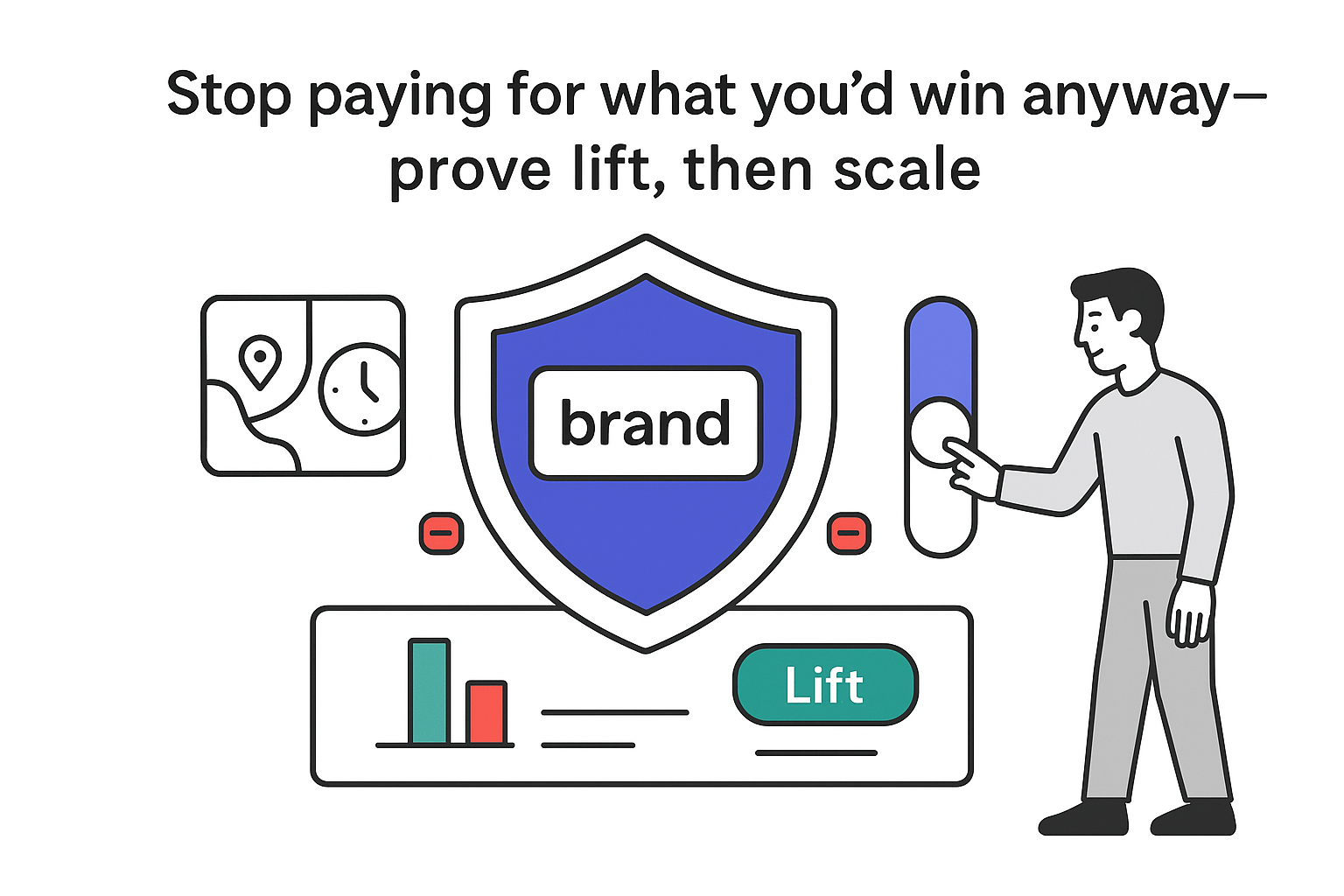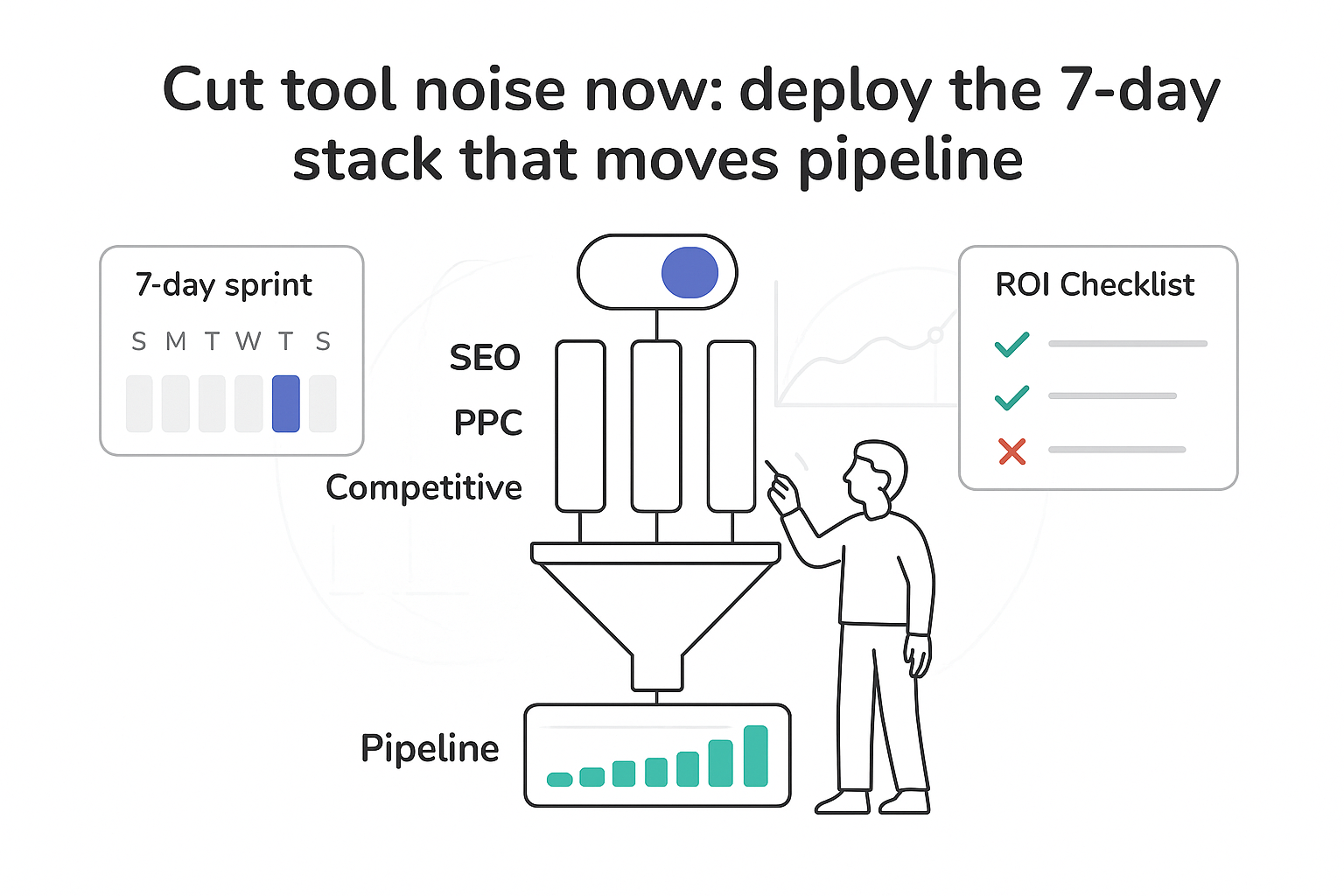You care about results, not hand-wavy promises. If organic search is supposed to be a growth channel, it needs to show up in your pipeline, not just a traffic chart. That is exactly where well-run B2B SEO work shines. I set clear targets, remove guesswork, and keep teams out of the weeds while opportunities move from search to SQLs to revenue. Sounds simple. Also hard. So I make it measurable and accountable.
Make SEO accountable to pipeline
The right B2B SEO program connects rankings to booked revenue, not vanity metrics. I focus on a few needles that matter and keep them visible on a single, executive-friendly view.
- Intent-qualified organic sessions (not just raw traffic)
- Marketing qualified leads and sales qualified leads from organic with consistent definitions
- Pipeline value sourced and influenced by organic
- Customer acquisition cost trends from organic
- Close rate and sales cycle movement by content touchpoint
I align these with sales ops so the definitions hold up in board meetings. Then I keep a weekly checkpoint and a concise monthly summary that makes progress obvious without theatrics.
A practical 30/60/90-day view (and the caveats)
Clear expectations beat vague optimism. Timelines depend on domain strength, crawl frequency, content velocity, sales cycle length, and competition. With those caveats, here is a realistic high-level view when foundations are sound and high-intent content goes live early:
- 30 days: Baseline and first wins. Instrumentation and reporting in place, technical cleanup and indexing fixes underway, priority BOFU pages live, keyword gap and ICP insights documented.
- 60 days: Momentum on intent terms. Content sprints and internal links move mid- and bottom-funnel queries, early SQLs land from high-intent pages, CRO tweaks lift demo submissions.
- 90 days: Broader lift and clearer attribution. Rankings mature across clusters, attribution shows influence across deals, pipeline impact becomes visible in the CRM.
Indexing and ranking maturation can vary (especially for new domains), but directional signal often shows up within 4-12 weeks when you remove technical drag and publish the right pages. I treat these checkpoints as hypotheses to validate, not guarantees.
A strategy that mirrors how buying committees decide
A clear framework beats scattered tactics. I anchor strategy to the way buying committees actually evaluate options. Research from Gartner and Forrester shows B2B purchases typically involve multiple roles and a non-linear journey. I plan accordingly.
- ICP and buying committee research: Interviews, call notes, win-loss data, and social signals feed messaging. I map pains, triggers, and objections by role.
- Opportunity mapping: I size clusters by addressable query volume, intent mix, and ease of winning, using SERP patterns and first-party conversion data to ground the numbers.
- BOFU → MOFU → TOFU sequencing: I build from the bottom up - service pages, solution comparisons, and industry pages first. Then mid-funnel guides, frameworks, and use cases. Finally, thought leadership that earns links while staying practical. Internal links stitch it together.
- Content sprints: Two-week sprints with briefs, drafts, and QA. Writers get keyword maps, internal link targets, and SME input before drafting so quality stays high and revisions drop.
- Authority building: Digital PR, partnerships, and original research that would deserve links even if search did not exist.
- Quarterly planning: Every 90 days I reset priorities based on results and market shifts. New product lines, competitor moves, and seasonal swings all feed the plan.
AI can speed SERP analysis and outlines, but I keep human editorial judgment on quality, originality, and fit for the buyer.
From click to CRM: map the journey
Traffic is nice. Pipeline is better. I map each click to a next step and a CRM stage so intent turns into revenue.
- Lead enrichment and qualification: Firmographics like industry and company size help route higher-fit leads to sales and send others into a tailored nurture.
- Attribution leaders trust: I agree on one model for board reporting (sourced/influenced) and layer multi-touch views where needed. Consistent UTMs, clean campaign naming, and field mapping prevent reporting whiplash.
- BOFU page types that close the gap: Service hubs with clear problem/solution language. Comparison pages that answer "why you vs X." Industry case study clusters that pair proof with a tailored narrative. Pricing and packaging pages that anticipate procurement questions.
- Nurture paths by intent: High intent goes straight to a demo. Mid intent gets a concise explainer or assessment. Low intent gets a short educational sequence and a clear route back when timing is right.
- Accelerators: Interactive assets and brief self-assessments can give buyers a reason to talk to sales sooner - used sparingly and tied to a clear next step.
The thread through all of this is clarity: one defined next action per page, minimal friction, and proof placed where doubt usually shows up.
Technical foundations that remove the SEO tax
If the site is slow, messy, or hard to crawl, you are paying a tax on every campaign. I keep the foundation solid and enterprise-ready.
- Crawlability and architecture: Clear service silos, clean URL structures, no orphan pages. Logical breadcrumbs and HTML sitemaps help both users and bots.
- Programmatic pages at scale: One layout, many pages powered by structured data (for industries, regions, or use cases) that stay unique and useful - not thin copies.
- Core Web Vitals: Real-user data guides fixes for LCP, CLS, and INP. I keep third-party scripts in check, compress media, and tune caching and CDNs in line with Google guidance.
- Schema markup: Organization, product/service, FAQ, review, and breadcrumb markup where it adds context (not as a shortcut to rankings).
- Security and reliability: HTTPS, HSTS, certificate checks, and a change-management routine so releases do not break rankings. Uptime and alerts that match enterprise expectations.
- Log file insights: See exactly what crawlers hit, where crawl budget is wasted, and which sections deserve more internal link support.
- International SEO: Language and region tags, dedicated sitemaps, and a plan for multilingual content that preserves intent via transcreation - not awkward translation.
- Event tracking: Button clicks, form starts/completions, and key interactions instrumented so conversion analysis is possible without drowning in noise.
A compact technical health scorecard and a simple architecture map help non-technical leaders see progress at a glance.
Conversion habits that compound
Traffic without conversions feels like a busy trade show with no badge scans. CRO sits inside B2B SEO, not as an afterthought but as a weekly habit.
- Message-market fit on key pages: Headlines that reflect pains straight from sales calls. Jargon removed. Proof front and center.
- Proof density: Logos, short quotes, certifications, and security badges - placed where doubt typically appears, not piled on.
- Pricing and packaging clarity: Simple tables, toggles, and a "how to buy" explainer that calms procurement questions.
- Offer design that matches intent: Demo for higher intent. Short consult or assessment for those still framing the problem. A clean calendar flow keeps momentum.
- Friction removal: Fewer fields, in-line validation, smart defaults, and one primary action. Secondary routes like chat or email nearby but quieter.
- SEO testing: Title tags, meta descriptions, and FAQ modules tested where it makes sense. Content experiments with clear hypotheses.
A sample test backlog I keep:
- Replace a hero headline with language lifted from recent win notes
- Move the proof block above the fold on key service pages
- Reduce a form to three fields and shift the rest post-submit
- Add a comparison table to a competitor-alternative page
- Swap a generic CTA for one tied to a specific outcome
Two or three live tests per month beat a big push once a year.
Evidence and expectations leaders can trust
Data gets messy without a plan. I start with a clean tracking framework and integrations that support board-ready reporting while honoring privacy standards.
- Field and event mapping: Align CRM and analytics fields to the way the business reports pipeline, CAC, and content impact by cluster.
- Performance and privacy: Favor approaches that reduce client-side script bloat, respect consent, and maintain reliable attribution.
- Data QA: Scheduled checks catch broken events, missing UTMs, and bad referrer data so issues surface quickly.
- Executive dashboards: Pipeline and CAC from organic, content impact by cluster, and a plain-English weekly summary. Forecasts use ranking opportunities, average selling price, and close rate assumptions to set bold yet grounded targets.
What results look like in practice (illustrative, not promises):
- Mid-market cybersecurity SaaS: Heavy paid spend, weak BOFU content. After rebuilding the service hub, adding comparison pages, tightening technical health, and refining the demo flow, qualified organic demos lifted meaningfully within a quarter and pipeline impact became clear over two.
- Regional IT services provider: Thin service pages, slow site, no attribution. Programmatic industry pages, Core Web Vitals fixes, attribution setup, and a case study cluster correlated with strong growth in organic SQLs and sourced/influenced pipeline within six months.
- Global professional services: Complex buying committee, scattered content, international gaps. Role-based content, hreflang and language-specific pages, and mid-funnel guides from webinar recaps shortened time to first meeting and expanded multi-region reach in year one.
Final thought that may sound like a contradiction at first: SEO feels slow, yet the right kind of B2B SEO produces early wins. Fix the technical drag and launch BOFU pages, and SQLs often land in the first quarter; build authority and clusters, and you lock in compounding gains for the next four. Both can be true. The plan just has to tie work to revenue, show progress every week, and remove the need for you to babysit. That is the job.







.svg)